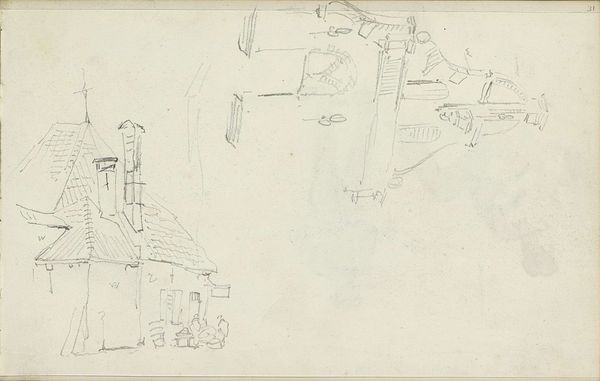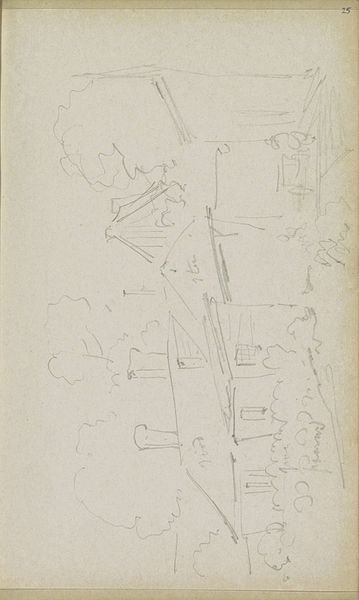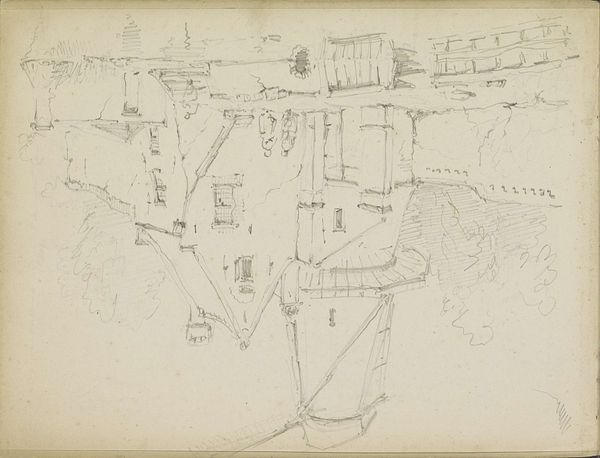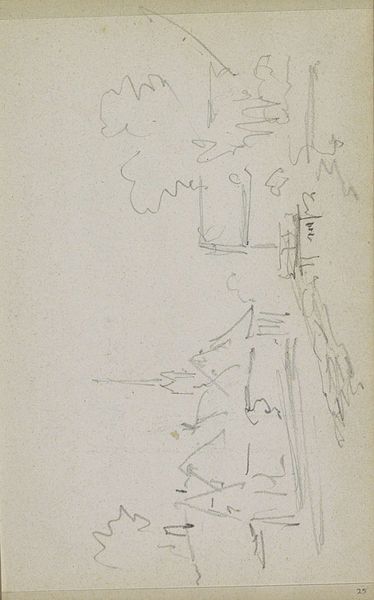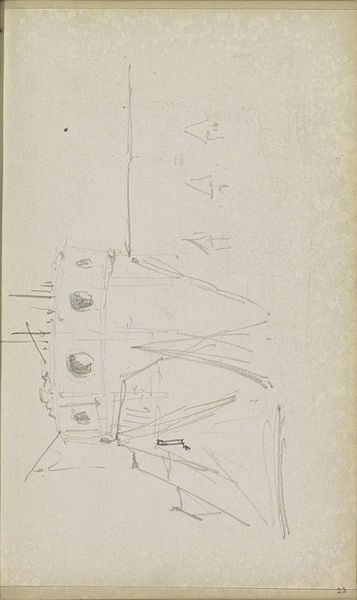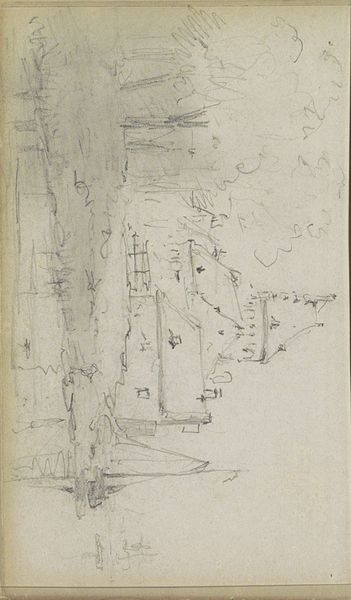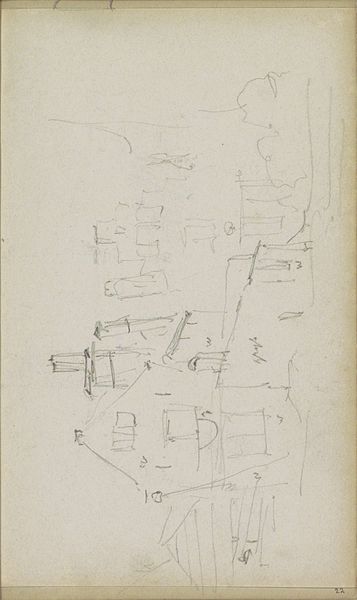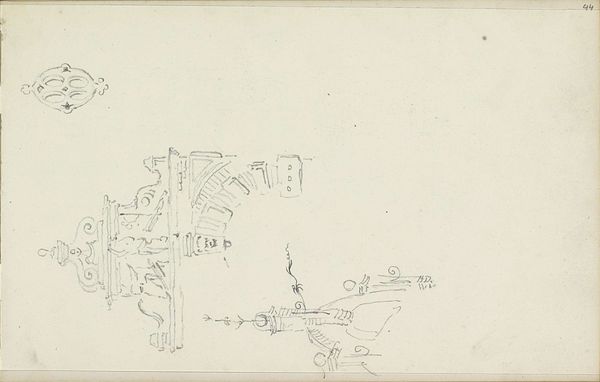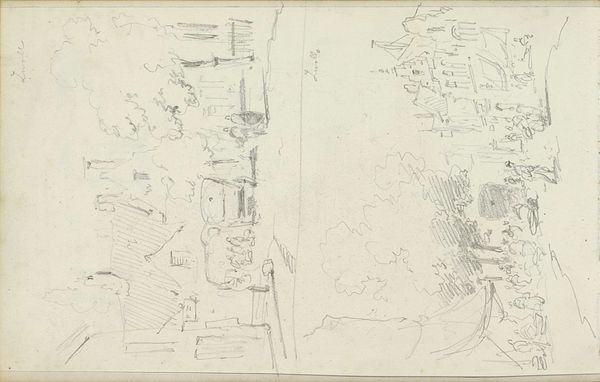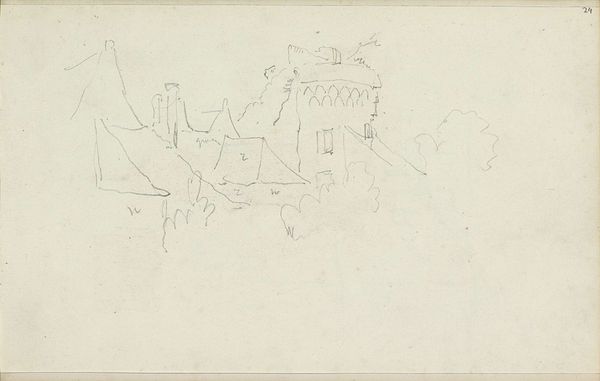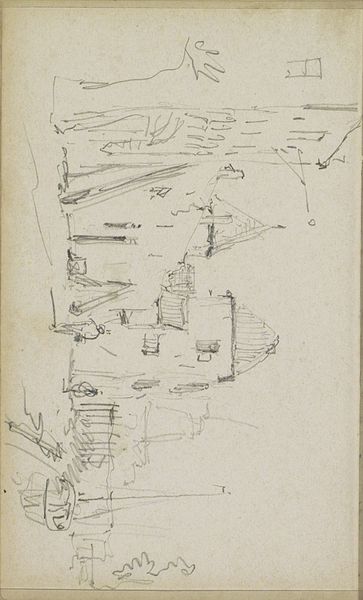
drawing, paper, pencil
#
drawing
#
landscape
#
paper
#
geometric
#
pencil
#
cityscape
Copyright: Rijks Museum: Open Domain
Curator: Here we have Adrianus Eversen's "Admiraliteitsgebouw," a pencil drawing on paper dating roughly between 1828 and 1897. It captures a cityscape with strong geometric forms. Editor: My first impression is that it feels like a half-remembered dream. The lines are delicate, almost tentative, and the composition has this slightly disorienting perspective. It reminds me of architectural fantasies, like Piranesi. Curator: That dreamlike quality perhaps reflects the historical moment of its creation. Eversen was active during a time of intense urban transformation. Buildings took on political meanings as cityscapes were being rebuilt to represent social power. Editor: Exactly! Look at the Admiralty building itself – it stands as a visual emblem, loaded with meaning. A wheel as symbol for movement, circles of power with strong vertical forms… It almost shouts “authority.” The tower adjacent is circular, and its geometry looks less forceful and more accepting, despite its vertical design. Are there inscriptions present, too? It has been written on the drawing as to leave an informational message of what they are meant to represent. Curator: Yes, there appear to be annotations accompanying the sketch, potentially documenting architectural features. But it's hard to read those precisely. It is interesting to contemplate what Eversen aimed to convey or conceal in rendering specific attributes with such differing attention. These structures held political importance in the culture of that period. Editor: And think about how this fragile drawing contrasts with the solidity of stone and the authority of these buildings! I’m caught by the emotional tension between this lightness and the permanence these places must represent. Almost like a ghostly symbol itself. Curator: I find myself contemplating its location within an evolving artistic world in regards to representation of civic identities through constructed landscape views. These depictions reinforced ideological visions of the region during turbulent eras by either reaffirming or rejecting prevalent societal tenets concerning modernity, governance, or communal principles inherent inside cultural memory linked through time. Editor: Reflecting on this, Eversen’s “Admiraliteitsgebouw” serves not just as a visual record of a specific location, it provides windows through which we view interpretations conveyed inside forms themselves revealing memories woven across time and space themselves within cultural symbolism connected inextricably human awareness embedded intrinsically everywhere encompassing existence as continuous narrative spanning our very lives... Curator: Agreed, considering his piece demonstrates a certain amount of civic ideology rendered sensitively utilizing an ephemeral medium adds much value that should still resound currently throughout conversations about politics through symbols everywhere society finds reflection to offer guidance toward how cultural perceptions regarding authority could then still echo presently via interpretations discovered by later ages inside historic items, artworks amongst the representations discovered everywhere throughout civilization which should cause contemplation...
Comments
No comments
Be the first to comment and join the conversation on the ultimate creative platform.
